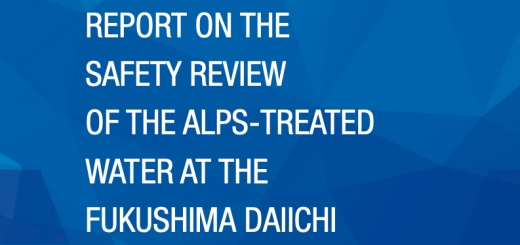CNIC Statement Concerning Fukushima Daiichi Nuclear Power Plant Nuclear Safety Commission’s Response
March 31, 2011
Nuclear Safety Commission: We want action rather than lip service to ‘learning lessons’
Demands by Citizen’s Nuclear Information Center
Many people are wondering, “What is the Nuclear Safety Commission doing?” At last it has come out in public. It is reported that the chairperson of the Nuclear Safety Commission has stated regarding the accident countermeasures, “We left that up to the initiative of TEPCO,” and concerning earthquake safety, “They couldn’t have designed it if a decision hadn’t been made about the criteria.” This is an evasion of responsibility.
Questions are now being asked about how the Nuclear Safety Commission will act based on the lessons learned thus far. CNIC demands that the Nuclear Safety Commission take the following countermeasures immediately.
1. Earthquake seismologists have pointed out that the March 11 earthquake will speed up the activity of further earthquakes. In particular, the predicted Tokai Earthquake could occur at any time. Despite this, Chubu Power Company continues to operate its reactors, saying that it will reinforce their earthquake safety. But there can be no doubt about the great tragedy that would occur if another nuclear earthquake disaster were to happen now. We demand that the Hamaoka Nuclear Power Station be shut down while seismic safety reinforcement checks and implementation of resulting measures are carried out. At the same time, the Nuclear Safety Commission should immediately carry out a full safety check, including seismic safety and enhancement of responses to severe accidents.
2. The work conditions at the site of the Fukushima Daiichi Nuclear Power Station are extremely severe. It is clear that this situation will continue for a long time. In this radiation exposure environment, a large number of workers will be required. It is therefore necessary to secure workers as quickly as possible by mobilizing even those formerly engaged in the nuclear power industry, including nuclear power specialists.
3. SPEEDI (System for Predicting Environmental Emergency Dose Information) was put to almost no use at all, but according to the published evaluation results, given the way in which contamination has spread, there are additional areas from which pregnant women, children and others at risk should be evacuated immediately. Moreover, the situation at Fukushima Daiichi Nuclear Power Station is exceedingly severe. There is no guarantee that the worst possible situation will not occur. The possibility that an M7-class earthquake could strike again makes the situation all the more critical. It is obvious that people within 30 km should be evacuated, but an evacuation plan covering a wider area should be implemented on the assumption that the worst-case scenario may occur.
4. The media are feeding out images of ÅgexpertsÅh who repeatedly claim that “there is no health impact” from radiation exposure and that “there is no risk of cancer.” Is it really acceptable that these “experts” continue to spout this dubious science? As a result, people who are concerned about the situation will become more anxious and those who are not concerned will believe what the ÅgexpertsÅh say and, despite relatively high ambient radiation doses, will allow their children to play outside. The cancer risk must be correctly reported.
5. The Nuclear Safety Commission must hold press conferences at a set times each day, and hold emergency press conferences whenever necessary.

